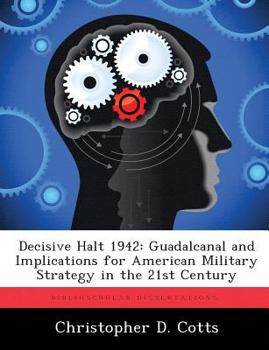Decisive Halt 1942: Guadalcanal and Implications for American Military Strategy in the 21st Century
The recent Report of the Quadrennial Defense Review outlines an increased need to execute "Halt Phase Operations," defined as the halt of an enemy invasion of friendly territory before the enemy reaches his strategic goals. In order to meet this challenge, the QDR panel proposes a force that relies on the Revolution in Military Affairs to leverage increased military capability from a smaller force. Other agencies, in particular the United States Air Force, have proposed that Halt Phase operations can best be executed by modern airpower. Unfortunately, this assertion is not borne out by current military combat models. Therefore, this study examines a historical example, the World War II Guadalcanal campaign, to examine the Halt Phase and develops some critical issues for this key phase of battle. First, trading mass for technological superiority increases the risk of failure under a wide range of circumstances. Second, sound operational force employment is also a key to victory, a major problem in a two-major theater war scenario. Third, sustainment capability is crucial. Fourth, multi-dimensional combat capability provides a war-winning edge. Failure to heed these conclusions may not risk outright defeat but does increase the possibility of failure in the Halt Phase and a reversion to attrition warfare--exactly the situation the American strategy and operational forces are designed to avoid.
This work has been selected by scholars as being culturally important, and is part of the knowledge base of civilization as we know it. This work was reproduced from the original artifact, and remains as true to the original work as possible. Therefore, you will see the original copyright references, library stamps (as most of these works have been housed in our most important libraries around the world), and other notations in the work.
This work is in the public domain in the United States of America, and possibly other nations. Within the United States, you may freely copy and distribute this work, as no entity (individual or corporate) has a copyright on the body of the work.
As a reproduction of a historical artifact, this work may contain missing or blurred pages, poor pictures, errant marks, etc. Scholars believe, and we concur, that this work is important enough to be preserved, reproduced, and made generally available to the public. We appreciate your support of the preservation process, and thank you for being an important part of keeping this knowledge alive and relevant.





